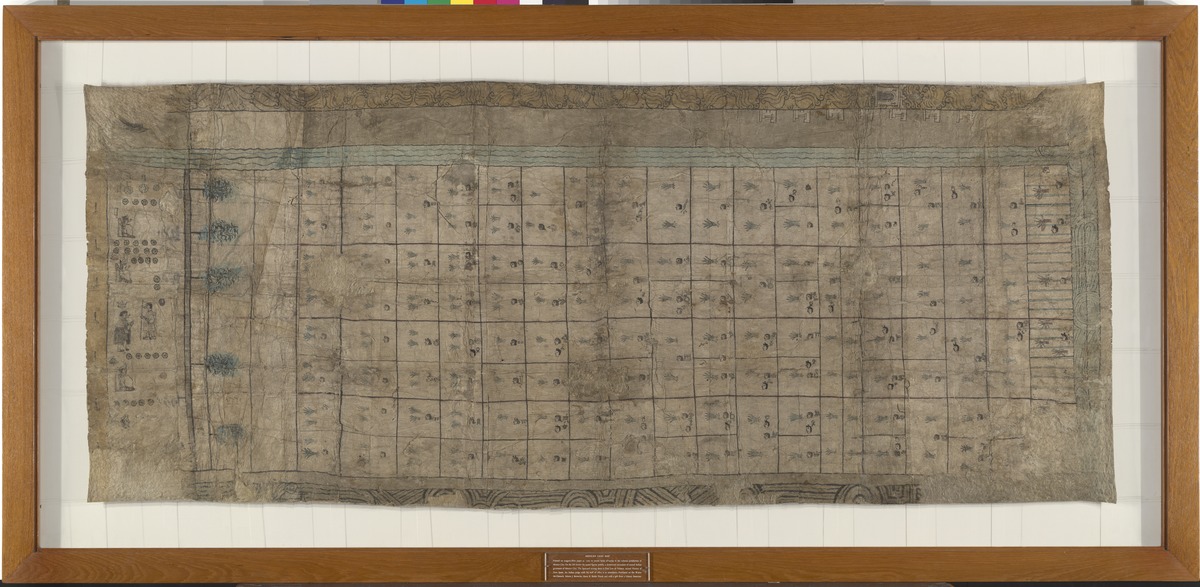Codex Reese
A mid-16th-century map of Mexico City, which records the architecture and landholdings of a section of the city

In 1975, the Beinecke Rare Book and Manuscript Library of Yale University acquired a mid-16th-century map of Mexico City. This document, which records the architecture and landholdings of a section of the city, also contains a great deal of information about the region’s indigenous peoples. It wasn’t until two decades later, however, that the broader importance of the map vis-à-vis the history of New Spain and Mexico was explored.
Now available: Painting a Map of Sixteenth-Century Mexico City: Land, Writing, and Native Rule, edited by Mary E. Miller and Barbara E. Mundy.
In brief, as Mary Miller says in the introduction to the volume of essays, “The subject of the Beinecke Map … is a record of agricultural landholdings in an area within the colonial jurisdiction of Mexico City, circa 1565. A large work on amate, or fig-bark paper, measuring nearly six feet long by about three feet wide, it shows a line of the Indian governors who were seated in Mexico City between 1538 and 1565 along its left side. Across from them, dominating the surface of the manuscript, is a map of 121 fields, most of which are named pictographically with smallholders. Just one minor (now nearly illegible) gloss of Nahuatl writing, the language of Central Mexico, appears on its surface, and no obvious toponyms (or place names) help pinpoint the specific location to which this map refers. Nonetheless, it is likely that the map was made in the 1560s to support indigenous land claims in the Valley of Mexico, probably within the city itself. The map presents water, a dike, and canals, all consistent with the problems of water management that afflicted, and still afflict, the Valley of Mexico, a region where the colonial tlatoque (Nahuatl tla’to’que’; rulers) pictured on the map still had some claim to power. Thus, the Beinecke Map charts political authority, time, and, perhaps most compellingly, the condition of sixteenth century New Spain.”